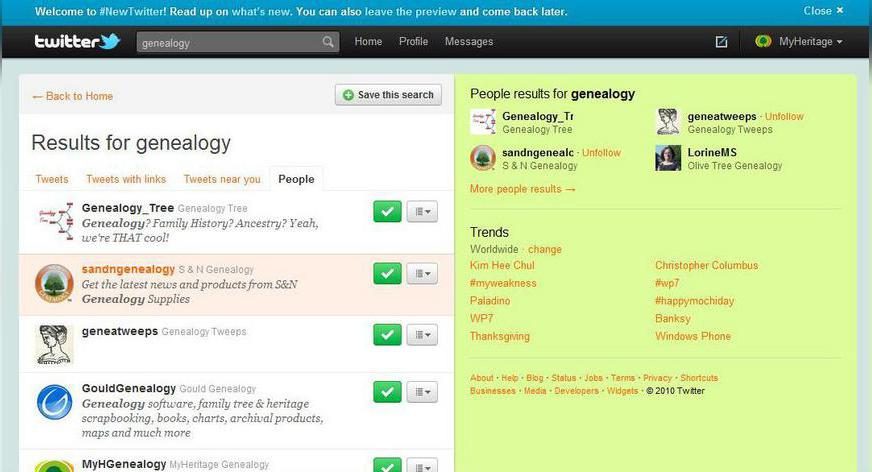

Let’s say you’re just starting on Twitter, or haven’t been using it for that long. You want to connect with other people who share your interests, but you don’t know quite where to start. Whom do you follow? How do you find them?
Here are a few tips if you’re in this situation. Even if you’ve been on Twitter for some time, these could find you some people well worth following.
1. Directories
Twitter directories are a bit like phonebooks, except instead of turning to an index and getting a page reference, you search by keyword and find what you want in just a few seconds.
Popular sites such as Twellow and wefollow all work in a similar way. Plug in the interest you want to search for (e.g. “genealogy”), and the directory shows you everyone listed in that field – ordered by follower count, influence or something else.
It’s worth listing yourself on these directories, too. If someone else is looking to add people who share an interest, you might be the one to catch their attention.
2. Twitter Groups
A few Twitter genealogy groups exist and, as with the directories, it can be worth following people on them (and indeed joining those groups). In particular, the genealogy lists on Twitter Groups and Twibes have strong membership lists.
3. Twitter Search
People who share your interests tend to talk about similar things, so if you search for a relevant keyword using Twitter’s search function you’ll be able to find relevant people. The most popular term to search is #genealogy. If you’re more of a specialist, just type in a term relevant to your field (e.g. #jewishgenealogy). If you’re one of the lucky few to have access to the “new” Twitter, you’ll be able to search not only tweets, but profiles. This is a very handy way to search people who’ve listed “genealogy” in their profile and, therefore, are likely involved with it.
If you don’t have access to the new Twitter, try a tool such as TweepSearch to do much the same thing.
4. Follow the Tweet Trail
A good way to keep track of good people is to keep an eye on what’s being repeated (“retweeted”) by your existing followers. Are they retweeting someone else’s posts very often? Are they Follow-Friday-ing people who look relevant? Are they creating lists with particular people on them? Keep track of this, and follow people as and when you think they’re going to be relevant to you.
Happy Tweeting!











